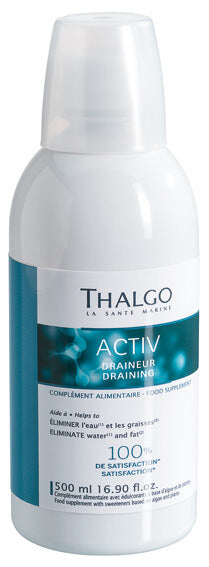COSMETICS WITH PLANT STEM CELLS: WHAT MAKES THE ALL-ROUNDERS OF NATURAL ORIGIN SO INTERESTING FOR MODERN ACTIVE COSMETICS
In the search for effective ingredients that help to sustainably improve the appearance of our skin, we continually come across new innovations in cosmetic research. But centuries-old knowledge is also increasingly coming into focus again when it comes to finding active ingredients that can bring about a visible improvement in the skin. Fueled, among other things, by the emergence of the natural cosmetics trend, plants and their naturally effective ingredients are once again receiving increased attention. Particularly interesting as a cosmetic helper: plant stem cells. In this article you will find out what place these natural “building blocks of life” play in modern skin care and how plant stem cell cosmetics work.
What are plant stem cells?
Stem cells are the “building blocks of life” that are responsible for development and regeneration in all living things. In animals and humans, not only the external shape but also all vital organs and functions develop from the stem cells in the embryonic stage. While the flexibility of stem cells in humans and animals decreases after birth because all of the vital “faculties” have already been developed, plants are constantly able to change throughout their lifespan. They contain “lifelong flexible” stem cells that are embedded in the so-called meristems.
Both the size and shape of plants are constantly changing - new shoots, leaves, flowers or fruits are created. This remaining flexibility makes plant stem cells so interesting for our entire organism, especially for the metabolic processes of our skin.
Why are plant stem cells used in cosmetics?
Plant stem cells are able to support processes that take place in the cells of our skin and thus counteract natural degeneration. Skin aging caused by stress or light can be effectively combated using cosmetics containing plant stem cells, as can signs of fatigue or lack of elasticity.
Plant stem cells are cellular all-rounders that, as a “flexible building material”, promote the regenerative processes of our skin and have a positive effect on the skin’s own ability to renew itself, which decreases over time.
This is how cosmetics with plant stem cells work
Although human and plant stem cells are different, studies have proven that cosmetics with plant stem cells promote the skin's own regenerative ability: Although our body's own stem cells ensure continuous renewal of the skin, this ability diminishes more and more as we age. This is where plant stem cell cosmetics come in: Cellular active ingredients of plant origin stimulate the skin's own collagen production, thereby reducing wrinkles and making the skin fresher, firmer and smoother.
Plants also have outstanding self-healing powers, which enable them to cope extremely well with injuries. They very quickly form new tissue from corresponding stem cells - which in turn makes them so interesting for the skin's own wound healing processes. The stem cells found in many fruits also counteract the breakdown of structural fibers; This explains why some apple varieties have a longer smooth skin than others.
This is how plant stem cell cosmetics are used
The respective type of plant stem cells results in a wide range of effects that are used in the cosmetic sector:
- Antioxidants can be extracted in high concentrations from plant stem cells
- Plant stem cells contain anti-inflammatory and cell-stimulating active ingredients
Plant stem cells are used in cosmetics in two different versions:
1. Variant: Through a certain type of cultivation, plant stem cells can be used as “raw material suppliers” of secondary plant ingredients. They lose their stem cell character and, as specialized cells, only produce the desired ingredient. It is not their regeneration-promoting stem cell character that is in the foreground, but rather the desired active ingredient of a particular plant that is extracted with their help, the effect of which can be even enhanced compared to conventional extraction from naturally grown plants.
2. Variant: The plant stem cells are cultivated without focusing on a specific desired ingredient. This takes advantage of the positive effects of stem cells as such; At the same time, the active ingredients of the respective plant can still be used.
How are plant stem cells obtained for cosmetic purposes?
Plant stem cells are found primarily in the roots and shoots of a plant, but non-specialized cells with stem cell characteristics can also form at cuts and breaks. Here the stem cells can be isolated particularly easily and further cultured in a special medium.
Depending on the type of cultivation conditions, the biosynthesis of the stem cells, i.e.H their natural specialization, can be controlled individually. For example, certain plant ingredients can be specifically isolated, which is particularly interesting for the synthesis of secondary plant substances: They only occur in very low concentrations in ordinary plants, but can be synthesized in higher concentrations and consistently high quality through targeted enrichment.
Plant stem cells also have advantages in terms of sustainability: They can be produced entirely in the laboratory, which means that neither land nor pesticides need to be used for cultivation. The extraction of plant stem cells also requires fewer extractants than extraction from plant material that has grown naturally.
Our top cosmetic product with plant stem cells:
The Cell Premium Eye Pads are suitable as effective anti-wrinkle care for the sensitive eye area, which refreshes, soothes and combats wrinkles and signs of fatigue and light-induced skin aging
We will be happy to advise you on the selection of plant stem cell cosmetics that suit your skin type and the needs of your skin and answer any questions you may have about skin care.



